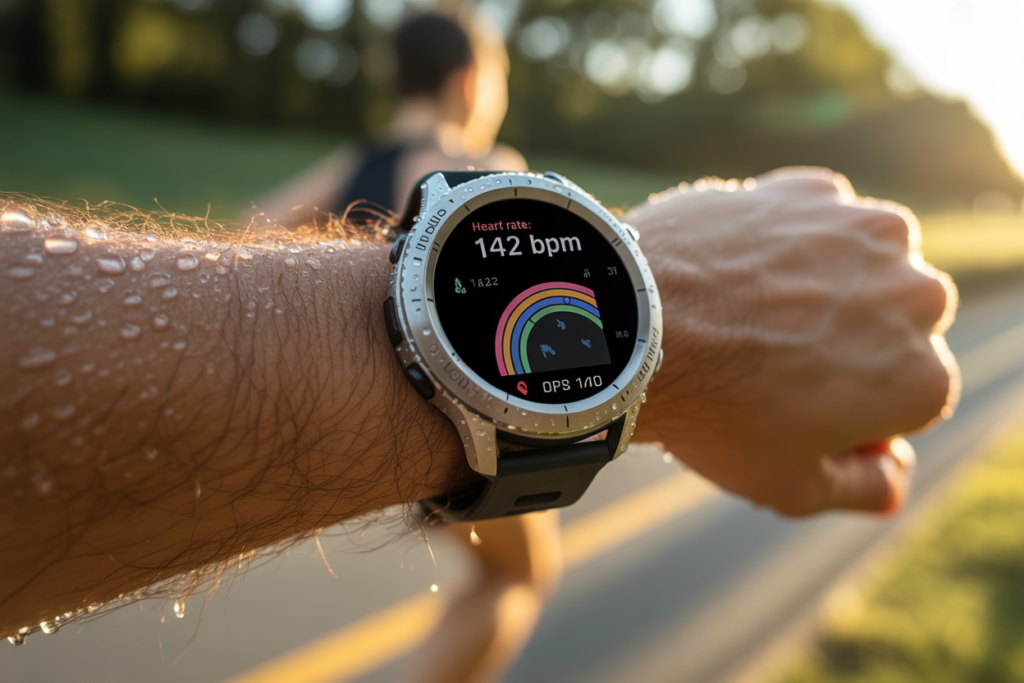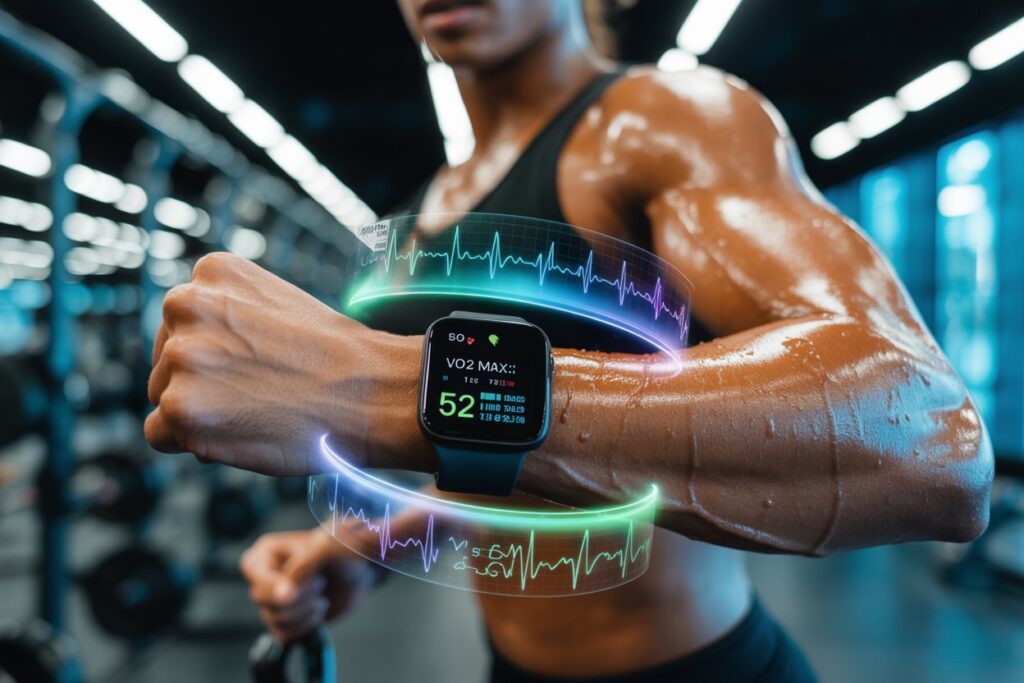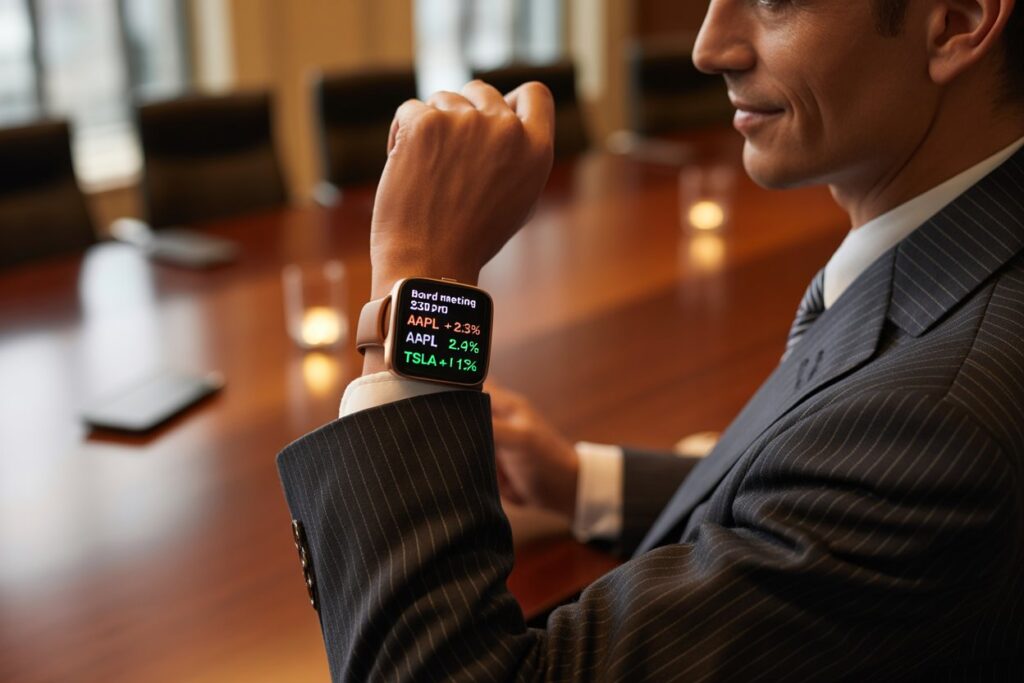Smartwatches have evolved from basic fitness trackers into indispensable companions that blend seamless connectivity, advanced health monitoring, and personalized AI-driven insights. In 2025, these wrist-worn devices are more than gadgets—they’re extensions of our smartphones, personal health coaches, and gateways to a smarter lifestyle. With the global smartwatch market projected to exceed $50 billion this year, according to Statista, innovations like enhanced battery life, AI-powered wellness assessments, and satellite connectivity are pushing boundaries. Leading models such as the Apple Watch Series 11, Samsung Galaxy Watch 8, and Google Pixel Watch 4 dominate, offering features tailored for iOS and Android users alike. This article dives deep into the standout features of smartwatches, exploring their hardware, software, health capabilities, and more, while highlighting how they integrate into everyday life. Whether you’re a fitness enthusiast, a busy professional, or a tech aficionado, understanding these features will help you choose the perfect smartwatch to elevate your wrist game.
The Fundamentals of Smartwatches
What Makes a Smartwatch “Smart”?
At its core, a smartwatch is a wearable computer that synchronizes with your smartphone to deliver notifications, track activities, and provide standalone functionality. Key hardware includes vibrant AMOLED or LTPO displays for crisp visuals, optical heart rate sensors for biometric data, and GPS for location tracking. Software ecosystems like watchOS, Wear OS, and proprietary platforms (e.g., Garmin’s) power the magic, enabling apps, voice assistants, and customizable watch faces. In 2025, LTE connectivity allows calls and streaming without your phone, while IP68 water resistance ensures durability for swimming or rain.
Modern smartwatches balance form and function: slimmer profiles (e.g., Apple Watch Series 11’s 9.7mm thickness) and materials like titanium or recycled aluminum cater to style-conscious users. Battery life has improved dramatically, with models like the OnePlus Watch 3 claiming up to 120 hours, far surpassing the 18-24 hours of earlier iterations. These fundamentals form the backbone for advanced features, making smartwatches versatile tools for health, productivity, and entertainment.
The Evolution of Smartwatch Features
Smartwatches trace their roots to the 1970s with the Pulsar Calculator Watch, but the 2010s marked the boom with the Pebble and Apple Watch. By 2025, features have matured: early models focused on notifications; now, they include FDA-cleared ECG for heart monitoring and AI-driven sleep apnea detection. Advancements in miniaturization have packed more sensors—barometers for altitude, altimeters for hiking—into sleeker designs. Software updates like watchOS 11 and Wear OS 5 introduce gesture controls and predictive health alerts. The shift toward hybrid models, blending analog aesthetics with digital smarts (e.g., Withings ScanWatch 2), appeals to traditional watch lovers. This evolution reflects a user-centric approach, prioritizing longevity, accuracy, and integration with emerging tech like AR glasses.
Key Hardware Features in Smartwatches
Display and Build Quality
The display is the smartwatch’s window to the world, and 2025 models shine with always-on LTPO AMOLED screens reaching 2,000 nits brightness for outdoor visibility. Apple’s Watch Series 11 features a wide-angle OLED that’s 40% brighter than its predecessor, while Samsung’s Galaxy Watch 8 uses sapphire crystal for scratch resistance. Build quality varies: rugged options like the Apple Watch Ultra 3 boast titanium cases and MIL-STD 810H certification for extreme conditions, weighing just 61.4 grams for all-day comfort. Garmin’s Venu 3S emphasizes lightweight aluminum with customizable bezels, blending sporty durability with fashion.

These displays support gesture controls—double-tap to answer calls on the Pixel Watch 4—and adaptive refresh rates (1-120Hz) for battery savings. For users with smaller wrists, 40mm options like the Galaxy Watch 8 provide a perfect fit without compromising screen real estate.
Battery Life and Charging
Battery life remains a top priority, with 2025 smartwatches averaging 24-72 hours. The OnePlus Watch 3 leads with 120 hours in smart mode, thanks to efficient Snapdragon W5 chips, while the Apple Watch Series 11 extends to 36 hours with low-power mode. Fast charging is standard: Samsung’s Watch 8 hits 50% in 30 minutes via wireless pads. Eco-features like solar charging on Garmin Instinct 3 add days in sunny conditions. For heavy users, models with 500mAh+ batteries, like the Huawei Watch Ultimate, ensure uninterrupted tracking.
Sensors and Connectivity
Packed with sensors, smartwatches now include blood oxygen (SpO2), temperature, and gyroscope for fall detection. The Galaxy Watch 8’s BioActive sensor suite enables irregular heart rhythm notifications, while the Pixel Watch 4 integrates Fitbit’s EDA for stress tracking. Connectivity upgrades feature dual-band GPS for precise tracking and UWB for spatial awareness. LTE variants, like the Apple Watch Ultra 3, support independent calls and Apple Pay, ideal for adventurers. Bluetooth 5.3 ensures stable pairing, and NFC enables tap-to-pay worldwide.
Health and Fitness Features
Heart Health and Monitoring
Smartwatches excel in cardiac care, with FDA-cleared ECG apps detecting atrial fibrillation (AFib) in seconds. The Apple Watch Series 11 adds hypertension notifications, alerting users to potential high blood pressure via optical sensors. Samsung’s Galaxy Watch 8 includes advanced AFib and blood pressure monitoring (calibration required), while Garmin’s Vivosmart 5 tracks VO2 max for endurance insights. These features have saved lives—over 1 million AFib notifications sent by Apple Watches since 2018.
Sleep and Recovery Tracking
Sleep analysis has deepened with AI algorithms scoring stages (REM, deep, light) and apnea detection. The Pixel Watch 4’s Fitbit integration provides a Sleep Score from 0-100, factoring in restlessness and oxygen levels. Garmin’s Body Battery metric gauges recovery, recommending rest based on stress and activity. Women’s health features, like cycle tracking on the OnePlus Watch 3, predict periods and fertile windows using temperature data.
Fitness and Activity Tracking
From auto-detecting workouts to coaching, fitness features are robust. The Apple Watch Ultra 3’s double-tap gesture starts runs, with Training Load metrics analyzing effort. Samsung’s Energy Score uses Galaxy AI to personalize plans, while Garmin’s Forerunner 965 offers multisport modes with PacePro for races. GPS accuracy, enhanced by multi-band tech, tracks hikes with <1% error.

Calorie burn, steps, and elevation are staples, but 2025 adds AI coaching—e.g., Garmin’s Morning Report suggests daily goals based on sleep.
Connectivity and Smart Features
Notifications and Communication
Smartwatches mirror your phone’s alerts, with quick replies via voice or keyboard. The Series 11 vibrates for texts, supporting emoji reactions, while Wear OS devices like the Pixel Watch 4 integrate Gemini AI for smart summaries. Calls over Bluetooth or LTE are crystal-clear, with noise cancellation on the Galaxy Watch 8.
Apps and Customization
Thousands of apps turn watches into mini-computers. Apple’s App Store boasts 10,000+ titles, from Strava to Shazam, while Wear OS supports Google Maps offline. Custom watch faces—over 10,000 on Samsung—let users personalize with complications like weather or stocks. Voice assistants (Siri, Google Assistant, Bixby) handle queries hands-free.
Payment and Access Control
NFC-powered payments are ubiquitous: Apple Pay, Google Wallet, and Samsung Pay work seamlessly. The Ultra 3 adds Ultra Wideband for precise Find My tracking, while security features like double authentication via wrist detection prevent unauthorized use.
Battery and Performance Optimization
Efficient processors like Apple’s S11 SiP and Qualcomm’s Snapdragon W5 Gen 1 deliver snappy performance with minimal drain. Always-on displays now sip power, and adaptive brightness adjusts to light levels. For power users, low-power modes extend life to 72 hours, prioritizing essentials like notifications over animations.
Design and Customization Options
2025 emphasizes versatility: square-faced Apple Watches for app efficiency, round Galaxy Watches for classic appeal. Bands range from silicone for sports to Milanese loops for formal wear, with quick-release systems for swaps. Colors—midnight black, rose gold—cater to all, and hybrid designs like Withings blend analog hands with digital screens.

Ecosystem Integration and Compatibility
iOS users thrive with Apple’s closed ecosystem, unlocking Siri shortcuts and iMessage. Android owners favor Wear OS for Google services, though Samsung-exclusive AI features require Galaxy phones. Cross-platform options like Fitbit Versa 4 work universally, syncing to both via apps.
Challenges and Considerations
Despite advances, smartwatches face hurdles: battery anxiety persists for LTE models, and sensor accuracy varies (e.g., SpO2 readings can err by 5%). Privacy concerns arise from constant data collection, addressed by on-device processing. High prices ($400+) limit accessibility, though budget picks like Amazfit Bip 5 ($50) deliver core features. Skin irritation from nickel allergies prompts hypoallergenic options.
The Future of Smartwatch Features
Looking to 2030, expect AR overlays via micro-projectors, non-invasive glucose monitoring, and neural interfaces for thought-controlled apps. AI will evolve into proactive guardians, predicting health events days ahead. Sustainability drives recycled materials, and foldable bands adapt to wrist size. With 6G, seamless streaming and global tracking will redefine connectivity.
Societal Implications
Smartwatches democratize health—fall detection aids seniors, reducing isolation. They promote activity, combating sedentary lifestyles, but data breaches risk privacy. Economically, they spur a $100 billion industry, creating jobs in AI and wearables. Ethically, equitable access ensures benefits for all, not just tech elites.
Conclusion
In 2025, smartwatch features have elevated these devices to essential lifelines, blending health insights, connectivity, and style. From the Series 11’s hypertension alerts to the Galaxy Watch 8’s AI coaching, innovation empowers users to live healthier, smarter lives. Whether prioritizing battery like the OnePlus Watch 3 or ruggedness like the Ultra 3, the right features await. As technology advances, smartwatches will continue unfolding possibilities—right on your wrist.
Leave a Reply